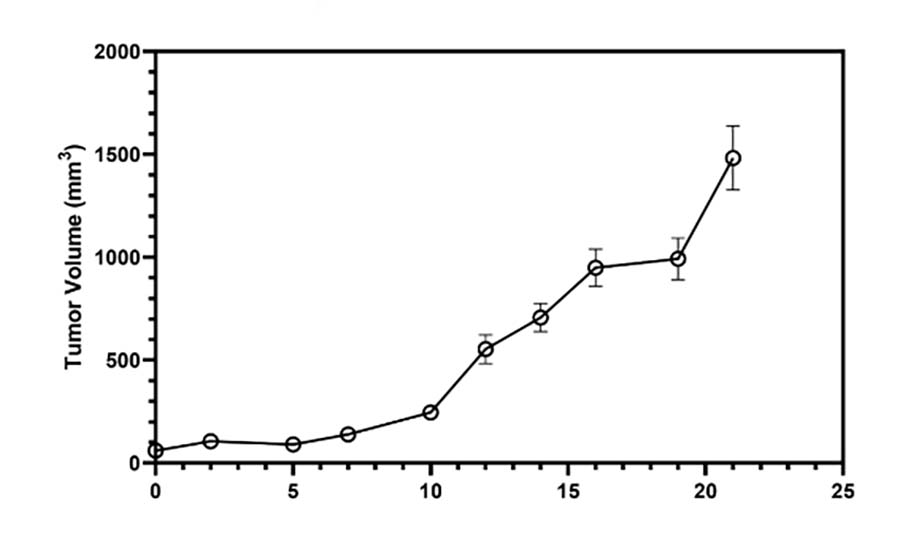
4T1 is highly tumorigenic, highly invasive and spontaneously metastasized from the primary tumor site. It can be used in orthotopic and flank models for study of primary tumors and for late-stage metastatic disease. Our models are fully characterized and can be adapted to suit the needs of your study.
Metastatic potential
This cell line spontaneously metastasizes in mice, spreading to the lung, liver, lymph nodes, brain, and bone, providing a viable platform for late-stage drug discovery.
Fully Characterized Model
We have characterized the 4T1 mouse model of gland cancer expressed as a flank model in BALB/c or in immunocompromised mice.
4T1 Tumor Model
The 4T1 tumor model is widely utilized in breast cancer studies, as this model takes its name from the 4T1 cell line, originating from a mouse mammary gland tumor, its cells have been extensively studied and found to be competent in accurately simulating TNBC.
Breast cancer derived cell line from the mammary gland tissue of BALB/c mice. This epithelial cell line resembles human triple-negative breast cancer (TNBC) with the lack of expression of ER, PR, and HER2.
Very closely related in tumor growth and metastatic spread to that of human breast cancer, Stage IV. Carrying a resistance to 6-thioguanine and ChEBI, metastatic cells can be detected in other distant site organs with good accuracy.
For stage IV breast cancer, the standard of care is systemic drug therapies such as hormone therapy, chemotherapy, targeted drugs, immunotherapy and a combination of these. In some instances surgery and radiation therapy may be useful.
Applications of the 4T1 Syngeneic Mouse Model
Therapeutic Interventions: The 4T1 mouse model can be utilised to assess the effectiveness of therapeutic interventions and treatments for triple-negative breast cancer. Studies can be conducted in administering chemotherapy agents, targeted therapies, immunotherapies, and experimental drugs to mice bearing the 4T1 tumor. In doing so, the 4T1 tumor aids in monitoring the tumor response of these measures, and the efficacy and safety of specific interventions.
Immunotherapy development: The 4T1 tumor model helps the development of immunotherapeutic strategies that are specifically targeted towards TNBC. It has been shown that immunotherapeutic approaches can aid in the treatment of various cancers, and the 4T1 syngeneic mouse model provides a sufficient immunocompetent setting to study the effectiveness of immunotherapies.
Fighting Drug Resistance: One significant challenge of TNBC is its resistance to chemotherapy, the 4T1 tumor model offers a platform that is needed to investigate mechanisms of drug resistance, through studying the response of 4T1 tumors to agents, novel drug formulations and combination therapies can be developed in order to overcome TNBC’s drug resistance.
Study of Metastasis: Another difficult challenge of cancer is metastasis and the spread of cancer cells to distant organs, the 4T1 tumor model is sufficient in providing the ability to observe tumor behaviour and how it is able to invade nearby tissues and form metastatic lesions in organs like lungs, liver, and bones.